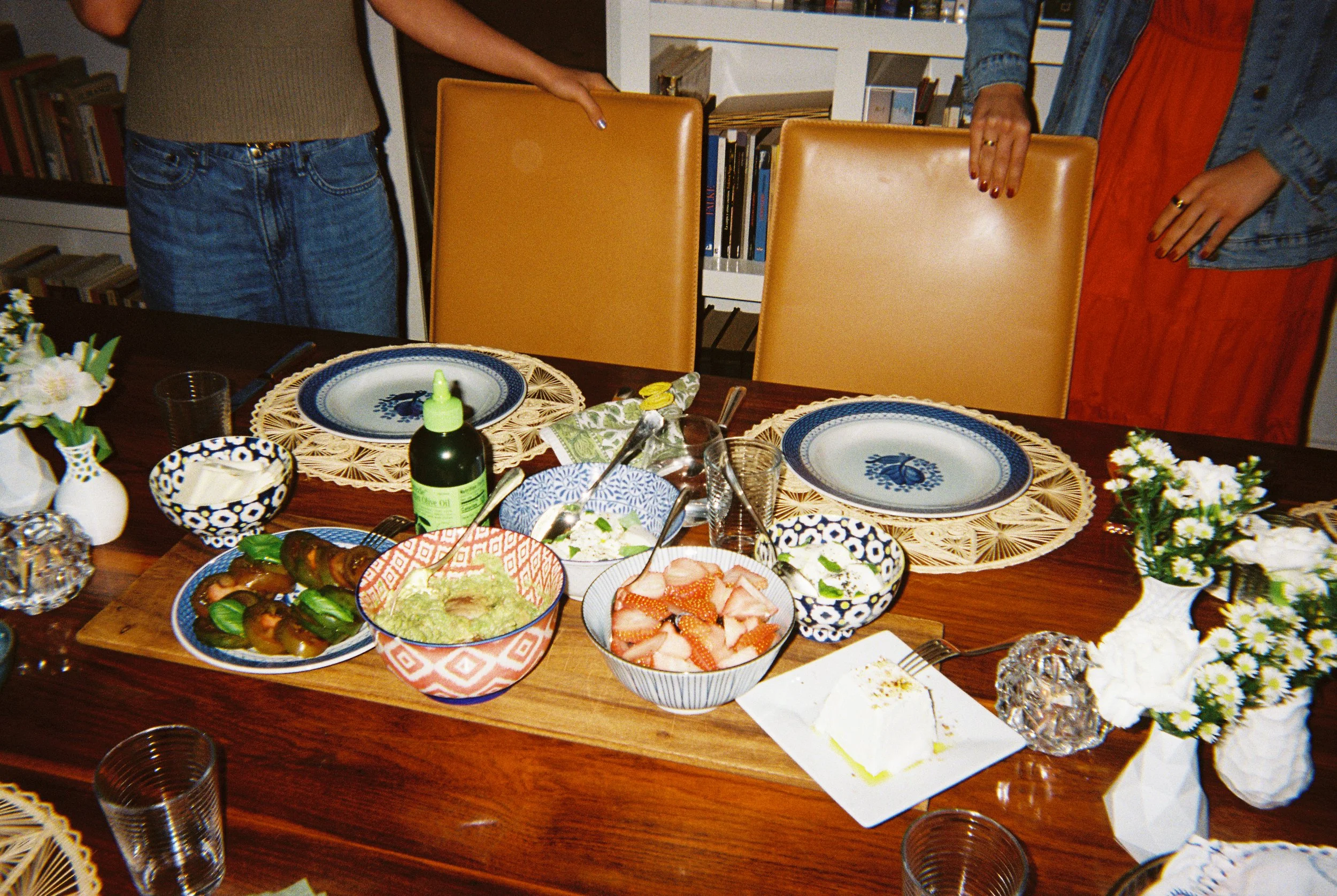More than a Meal
Image by Emilia Artisi on Dupe Photos.
For myself, and probably many other second-generation immigrants and mixed families, I’ve grown up with complex food traditions. A typical weekly meal plan might combine fish and chips, an Indian curry, Dutch meatballs, homemade burgers, and a traditional Malaysian rendang - foods that, despite being poles apart, all represent a piece of my identity.
Reflecting on this led me to realise food is so much more than something we just blindly consume to fuel our bodies; it can be a cultural memory, an aspect of personal identity, a form of tradition and resilience and even a way of expressing political views.
According to an article published by Insightful, “food, and the way we eat it, has become synonymous with our respective cultures.” Traditional foods often carry important cultural stories, with cooking and eating rituals making up significant parts of cultural identity. A spokesperson from NomNom Kitchen, a Southeast Asian restaurant with branches across New Zealand, noted their “restaurant keeps Thai traditions alive, offering locals and Thai expats a taste of home. Each dish has a story from family traditions... and we share these through our food.”
Similarly, ways of cooking also tell important stories about culture and history, like putting down a hāngī, clay pot cooking or methods of fermentation and food preservation. Cooking rituals and recipes passed down over time represent generations of traditional wisdom, and often carry narratives of migration and resilience. Academic John Clark argues “the way a dish is prepared, the way ingredients are combined to create a certain taste, the manner in which food is offered and received, all bespeak the very substance of a particular culture.”
In Jewish culture, the Passover meal, known as Seder, represents the exodus of the Jews from Egypt. An article published by Chabad notes that each aspect of the meal “has its place in a 15-step choreographed combination of tastes, sounds, sensations and smells that have been with the Jewish people for millennia.” This includes parsley dipped in salt water to represent the tears shed by the Israelite slaves, a mix of fruit, honey and nuts to portray the mortar used by the slaves to build the pyramids for the Pharoah, a bitter herb to depict the bitterness of slavery, and a lamb shank bone to represent the sacrifice of a lamb when the temple stood in Jerusalem. As well as this, a hard-boiled egg portrays the cycle of life and promise of new beginnings, and unleavened bread shows the rushed exodus from Egypt – leaving so quickly, the bread dough didn’t have time to rise.
Jean Anthelme Brillat-Savarin, a well-known culinary author, once said, “tell me what you eat, and I’ll tell you who you are.” The foods we eat or don’t eat, make up our identity. Vegan, vegetarian or halal diets often represent a unique family heritage or religious affiliation. Our favourite comfort foods tell stories about our childhood memories. Whether we eat with chopsticks, a fork and knife or our hands can help pinpoint our ancestors on a map. Food is a way of expressing ourselves, our emotions, and our love for others - be it an oven ready lasagna for your neighbour who just had surgery, a cake for your mum’s birthday or a plate of home baking for a friend when you pop over for a cuppa.
Reclaiming traditional recipes and ways of cooking has become a statement for indigenous and first nation people across the globe, using cuisine to share culture and push back against colonising and western centric forms of assimilation.
Fabio Parasecoli, a professor of Food Studies at New York University, writes about the protests that occurred in the North of Italy in the 2000s, where activists distributed posters stating, “yes to polenta, no to couscous” in attempt to show “polenta was worth embracing as an expression of local culture, while couscous was a manifestation of foreign customs.”
Soul food in the United States also represents a complex political history, where freed people migrating from the southern states, previously known as the ‘cotton belt’, developed a cuisine that played a role in the civil rights movement and continues to stand strong today. Soul food has callbacks to rations and other forms of nutrition that were found to supplement diets, from foraged vegetables to fish caught in local waters. Today, the cuisine is popular in the landlocked states of Georgia, Mississippi and Alabama, and includes fried chicken, smothered pork, ham hocks, okra, gumbo, kale, candied yams, grits, cornbread, black eyed peas, mac n cheese, peach cobbler and sweet potato pie. Adrian E. Miller, a soul food expert notes that, “as people left the South, they did what any other immigrant group does: they tried to re-create home.”
Home for me is where my family is. When my grandparents came to visit from Malaysia a few years ago, I spent hours in the kitchen with my grandmother, carefully helping her cook, and copying down recipes into my notebook. Whenever I make one of her famous recipes I’m reminded of the joy she brings to our family, and how she always has a hot meal ready for us when we arrive in Malaysia, no matter what time of night it is. To me, every meal is more than an ingredient list and method -- it’s a reminder of home and the people I care about.

